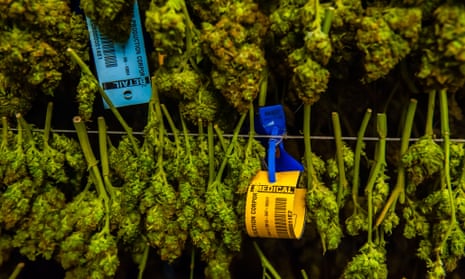Cannabis tends to be subdivided into 3 different species: Sativa, Indica and Ruderalis. However, these are merely terms used to describe the typology of the plant (it’s “looks” – shape, height, bushiness, and the like) rather than a specific distribution of its cannabinoids. When looking at the genome of the plant it becomes apparent that they all fit under the same species Cannabis sativa L, which is also evident as the different types can “mate” with each other (crossbreeding).
Users often make the claim that “sativas” produce a more “head-high” while “indicas” a more “body-high”, and that this could potentially be because of differences in THC content and CBD/THC ratio. However, there is no evidence to support the notion that CBD/THC ratios differ among the different types. Furthermore, nowadays there has been extensive crossbreeding which would make a further distinction between the types less meaningful.
The cannabinoids are produced in tiny crystal formations surrounding the cannabis flowers, these are called glandular trichomes. The trichomes also contain other compounds known as terpenoids which are responsible for the distinct smell of cannabis – the cannabinoids themselves are odourless! The reason the cannabis plant produces trichomes is thought to be as a defence against insects (cannabinoids are sticky and bugs get stuck in it), damaging infra-red and ultraviolet light, as well as harsh cold winds.
Many factors influence the THC content and the CBD/THC ratio of the plant, the most important one being the genes of the plant. Both THC and CBD are made from the same precursor compound known as cannabigerol (CBG). The genes of the plant determine how much of the enzymes THCsynthase or CBDsynthase the plant produces – which in turn will determine how much of the plants CBG will be turned into THC and CBD.
The another important factor is pollination. If the female cannabis plant is allowed to be pollinated, a great deal of the plants energy will be devoted to the production of seeds – resulting in fewer trichomes and a weaker drug. On the other hand, when pollination is not allowed the plant will instead devote its recourses to producing more trichomes and hence a much stronger drug – this type is referred to as sinsemilla, which is Spanish for “without seed”. It is the THC dominant sinsemilla plant which is commonly referred to as “skunk-like” cannabis.
Hash on the other hand is extracted tricomes (mixed with sifted plant matter), which usually results in a more potent drug compared to the cannabis flowers. The potency of the hash will depend on the potency of the cannabis plant it was made from.
The reason hash in the UK is relatively mild compared to skunk-like cannabis depends on how it is made. It usually comes from northern Africa where growers are more interested in getting a greater quantity of big cannabis flowers, meaning they do not discriminate based on THC potency and instead save the seeds from plants which made the biggest buds. This will give an even distribution of THC-dominant, CBD-dominant, and CBD/THC-equal plants; which when all processed together will give a hash relatively equal in its two main components. Also, the plants are allowed to be pollinated which means they won’t have as many trichomes as sinsemilla plants will – further decreasing the potency of the hash.

Comments (…)
Sign in or create your Guardian account to join the discussion